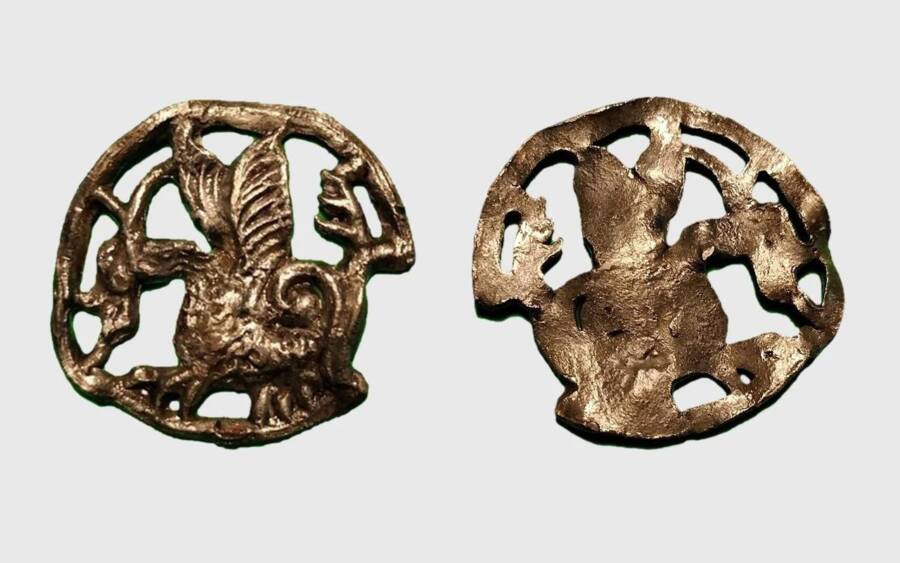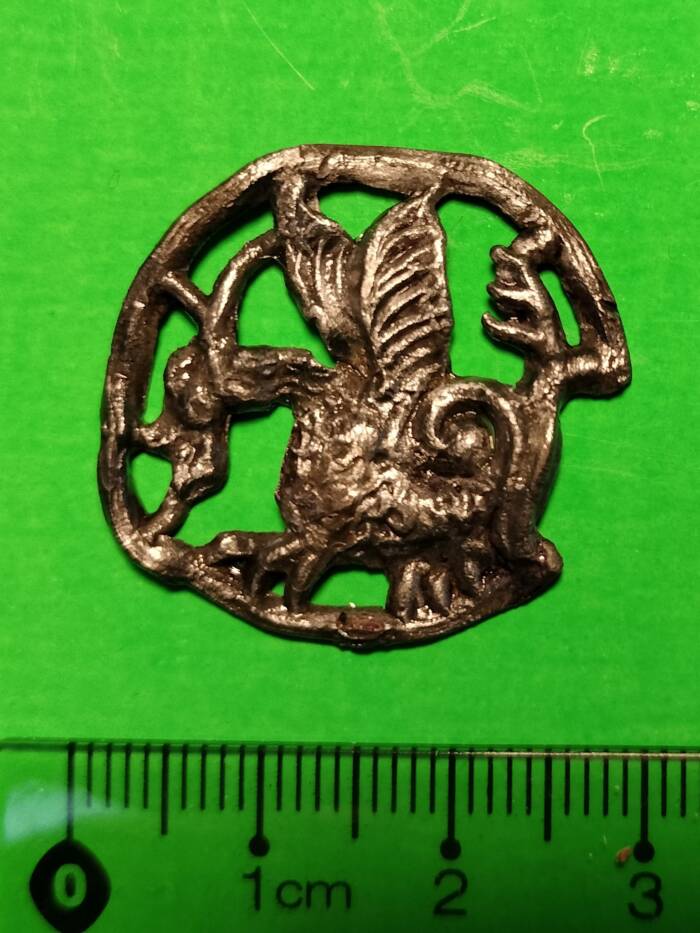The metal pendant measures just over an inch in diameter and is made from a lead and tin alloy.

Lublin Provincial Conservator of MonumentsThe badge would have been worn by a religious pilgrim as protection against evil.
Basilisks are terrifying mythical creatures capable of killing someone with a single glare. But for one pilgrim traveling through Poland in the Middle Ages, the basilisk may have offered a degree of comfort — as suggested by the rare discovery of a basilisk “pilgrim badge.”
Unearthed in the village of Wólka Nieliska, Poland, the basilisk badge was worn by a pilgrim during the Middle Ages as a protective talisman.
The Basilisk Badge Discovered In Poland
According to a Facebook post from the Lublin Provincial Conservator of Monuments, the basilisk badge was discovered by archaeologist Tomasz Murzyński in Wólka Nieliska, about 160 miles southeast of Warsaw.
The round badge is small, with a diameter of 2.8 centimeters (just over one inch) and a thickness of one millimeter. It’s made of a lead and tin alloy and prominently depicts a basilisk in the center of a circle.

Lublin Provincial Conservator of MonumentsThe small badge was discovered about 160 miles southeast of Warsaw.
“Such badges served as a kind of talisman, intended to provide the person wearing it success in the journey and to protect such a person from all kinds of ‘evil,’ i.e. assault, theft, diseases, and other random accidents,” the Lublin Provincial Conservator of Monuments explains on Facebook.
That said, such items are rare in Poland. Just a handful have been discovered in the country, six of which are held at the Archaeological and Historical Museum in Stargard. But they were more popular elsewhere.
The History Of Pilgrim Badges
As the Lublin Provincial Conservator of Monuments notes, pilgrims started wearing pendants like the basilisk badge in the early Middle Ages.
They came in different shapes, such as spirals, squares, crosses, shells, rings, and shields. They also depicted different protective figures, like saints, knights, human heads and chests, and birds, animals, or dragons.

Lublin Provincial Conservator of MonumentsPilgrim badges came in all different kinds of shapes and depicted creatures like the basilisk, animals or birds, or figures like saints or knights.
Though such badges have rarely been found in Poland, they have more frequently appeared in Western Europe. The oldest known pilgrim badges date back to the 11th century and were associated with travelers making their way along The Way of St. James — also known as the Camino de Santiago — a network of routes that pilgrims could follow to a shrine of the apostle James in Santiago de Compostela, Spain.
One popular pilgrim badge in the 12th century was the “Thomas Becket” badge, a nod to Archbishop Thomas Becket, who was murdered at Canterbury Cathedral in 1170 and later made a saint.

Metropolitan Museum of ArtAn example of a Thomas Becket pilgrim badge from circa 1350–1400.
As such, the basilisk pendant discovered in Poland belongs to a long and rich tradition of pilgrim badges in Europe. It stands out for both its striking imagery and its location of discovery. With little information about its former owner, one can only imagine the pilgrim who pinned the basilisk badge to their chest, hoping that the ferocious mythical creature would keep them safe during their travels through Poland and beyond.
After reading about the rare pilgrim’s badge with a depiction of a basilisk, discover the stories of some of the world’s most terrifying mythical creatures. Or, learn about Poland’s bizarre and enchanting Crooked Forest.





